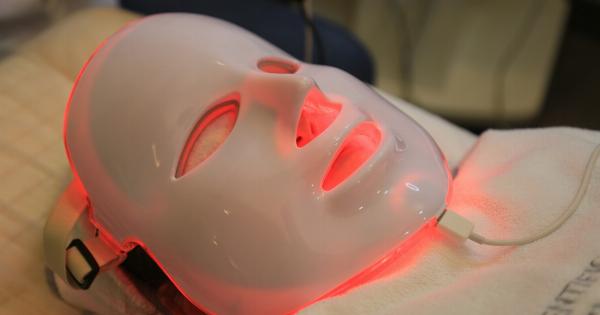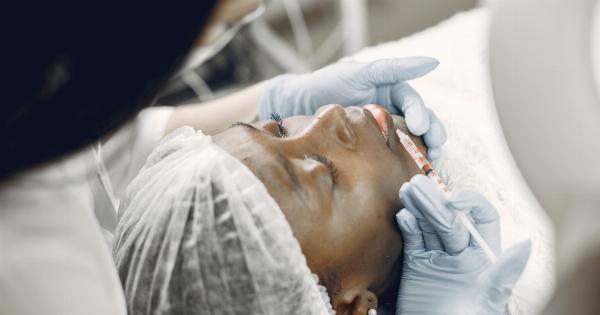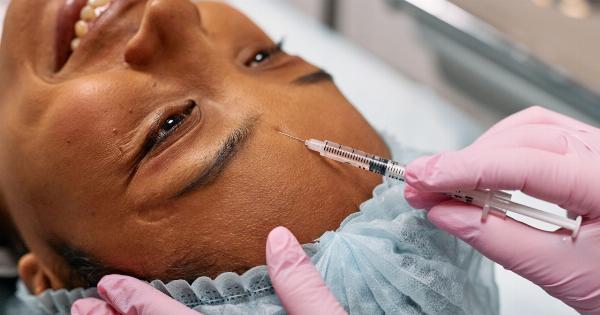When it comes to cosmetic procedures, Botox has become immensely popular in recent years. It is a non-surgical treatment that involves injecting botulinum toxin into the skin to reduce wrinkles and fine lines.
Botox is generally safe and effective when administered by a trained professional. However, there are certain situations when it may be unsafe to get Botox. In this article, we will explore those circumstances and discuss why caution is necessary.
1. Pregnancy and Breastfeeding
It is generally recommended to avoid getting Botox injections if you are pregnant or breastfeeding. While there is limited research on the topic, it is better to err on the side of caution.
The effects of Botox on unborn babies or infants are not yet fully understood, so it is best to postpone the treatment until after pregnancy or breastfeeding.
2. Allergies or Sensitivities
If you have known allergies or sensitivities to any of the ingredients in Botox, it is important to inform your healthcare provider. They will assess the situation and determine whether it is safe for you to undergo the procedure.
Allergic reactions to Botox can range from mild discomfort to severe complications, so it is crucial to take necessary precautions.
3. Weak or Damaged Facial Muscles
Individuals with weak or damaged facial muscles may not be suitable candidates for Botox injections. Botox works by temporarily paralyzing the muscles, which can help reduce wrinkles and fine lines.
However, if the muscles are already weak or damaged, it may further exacerbate the issue or lead to undesirable results. It is essential to consult with a qualified healthcare professional to determine the appropriateness of the treatment.
4. Skin Infections or Inflammation
If you currently have a skin infection, such as acne or herpes, or any other form of inflammation on or near the treatment area, it is advisable to postpone your Botox appointment.
Injecting Botox into infected or inflamed skin can potentially worsen the condition or lead to complications. It is important to ensure that your skin is in a healthy state before undergoing the procedure.
5. Certain Medications or Medical Conditions
Some medications and medical conditions may interact negatively with Botox. For instance, if you are taking muscle relaxants, blood thinners, or antibiotics, it is crucial to inform your healthcare provider.
Similarly, individuals with neuromuscular disorders, such as myasthenia gravis or Lambert-Eaton syndrome, should exercise caution when considering Botox. It is essential to provide your healthcare provider with a comprehensive medical history to avoid any potential complications.
6. Unrealistic Expectations
Botox can be highly effective in reducing the appearance of wrinkles and fine lines. However, it is essential to have realistic expectations regarding the outcome. It cannot completely eliminate all signs of aging or give you a completely new face.
It is a temporary solution that requires regular maintenance sessions. If you have unrealistic expectations, it may lead to dissatisfaction or disappointment with the results.
7. Lack of Expertise and Proper Administration
One of the most critical factors in determining the safety of Botox is the expertise and skill of the healthcare professional administering the treatment.
Botox injections should only be performed by qualified healthcare providers who have received proper training in aesthetic procedures. Choosing an inexperienced or unqualified individual increases the risk of errors, complications, and unsatisfactory results.
8. Mental Health Concerns
It is important to consider your mental health before deciding to get Botox. If you have underlying mental health concerns, such as body dysmorphic disorder (BDD), it may be necessary to address these issues before undergoing any cosmetic procedures.
Botox may not solve the underlying psychological issues associated with body image perception, and it is essential to approach it with a healthy mindset.
9. Overuse or Frequent Injections
Although Botox is generally safe, it is important not to overuse the treatment or get frequent injections in a short period. Excessive use of Botox can lead to muscle atrophy, where the muscles become weak or inactive.
This can cause undesirable changes in facial structure and expression. It is crucial to follow the recommended dosage and interval between treatments to maintain optimal safety and results.
10. Unregulated Providers and Fake Botox
The rise in popularity of Botox has unfortunately given rise to unregulated providers and counterfeit products. It is essential to seek treatment only from reputable and licensed healthcare providers who use genuine Botox.
Fake or diluted Botox can lead to serious complications or have no effect at all. Always research and choose a trusted professional to ensure your safety and the effectiveness of the treatment.
Conclusion
Botox injections have become a popular choice for individuals seeking to reduce the appearance of wrinkles and fine lines. However, there are situations when it may be unsafe to get Botox.
It is crucial to consult with a qualified healthcare professional who can assess your individual circumstances and determine the appropriateness of the treatment. Whether it is pregnancy, allergies, medications, or underlying conditions, taking precautionary measures ensures your safety and overall satisfaction with the results.





























